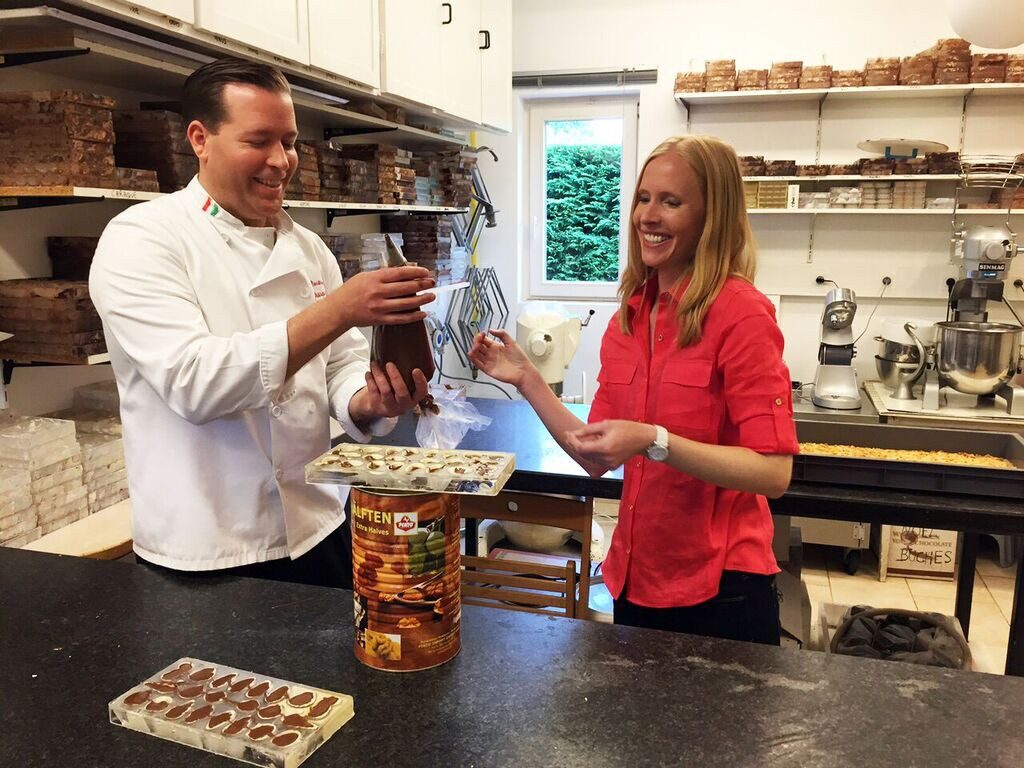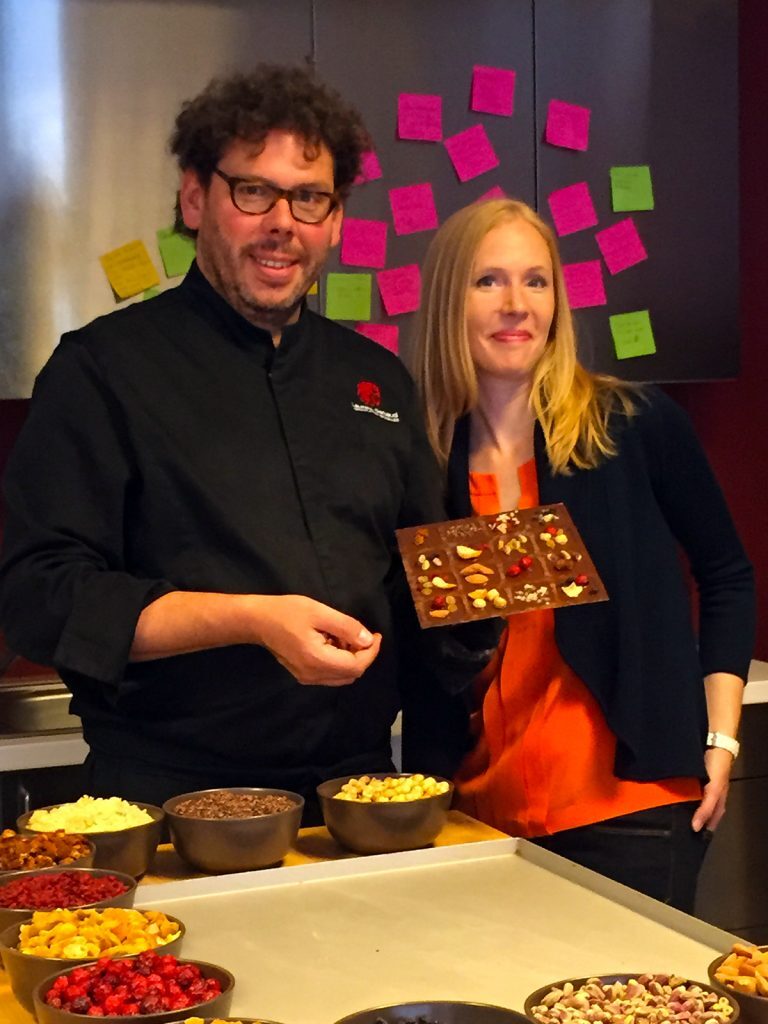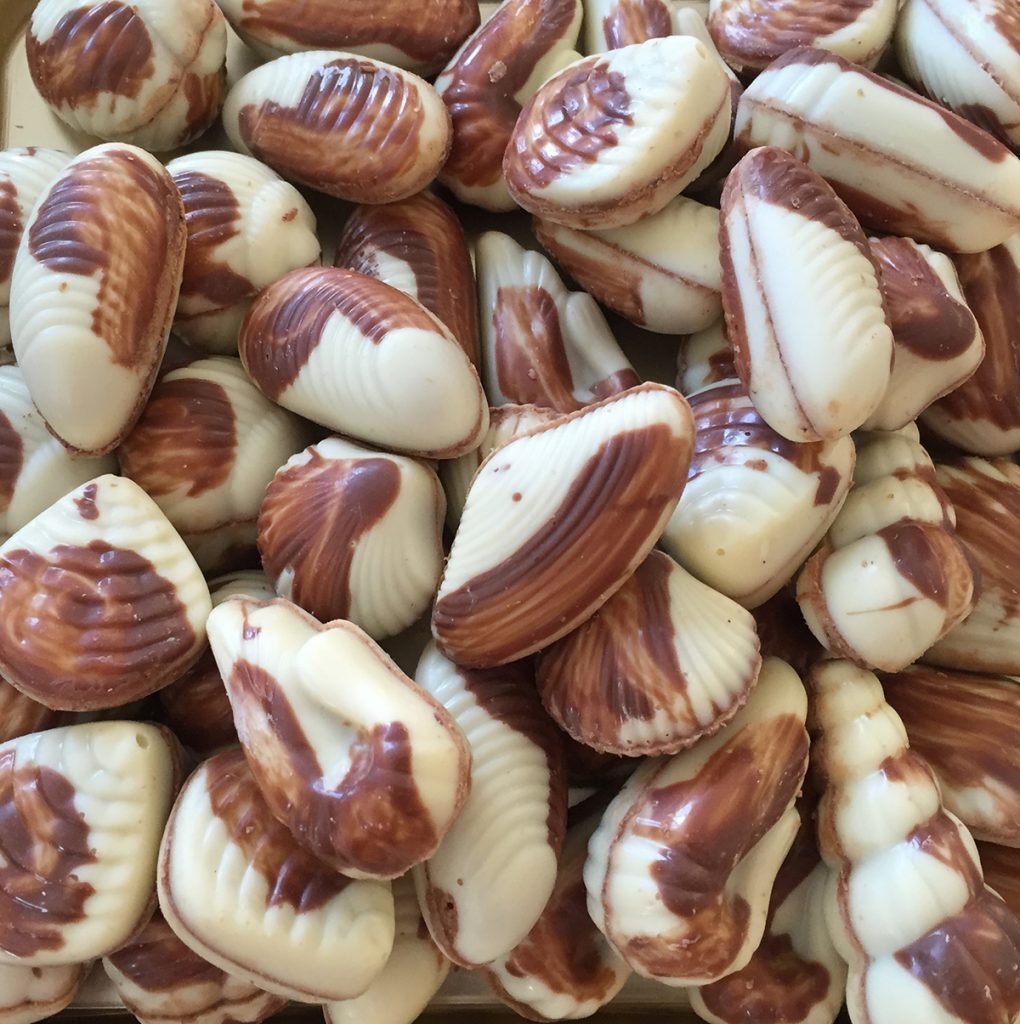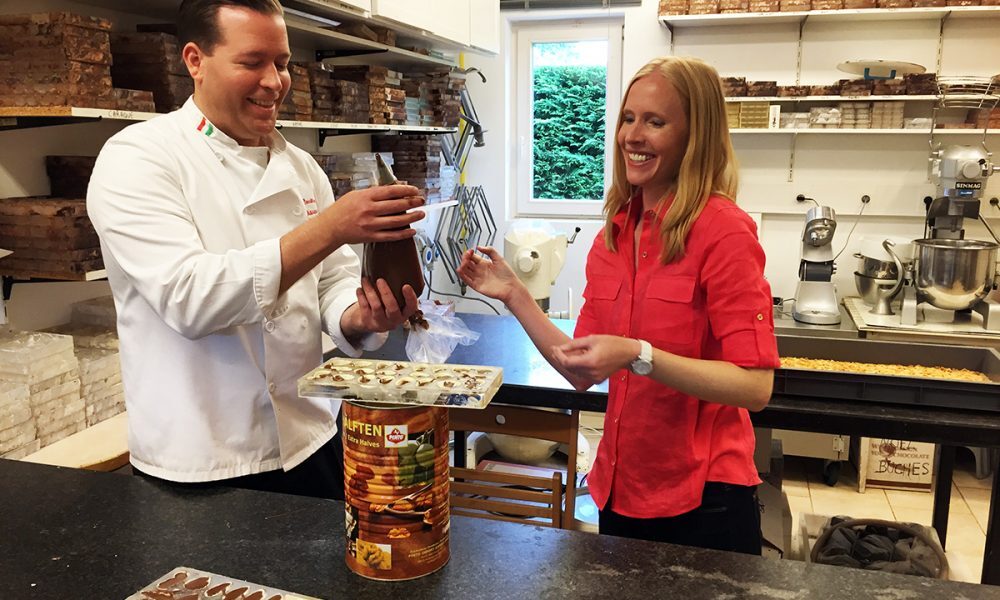From chocolate making workshops to where to taste and buy, the world of Belgian chocolate!

From mussels to frites to waffles to beer, the diversity and richness of cuisine in the small, European country of Belgium is superb, but one of the most well-known delights is Belgian chocolate. In the bright, crowded shop of top chocolatier Laurent Gerbaud, I begin an all-sensory quest to learn why.

Well known for his simple, yet addictive creations, Gerbaud’s shop is a feast for the senses with rows of chocolate laid out on display like a blanket of decadent goodness and the smell of tantalizing, melted chocolate cascading through the air. Chocolate made with robust cocoa beans from Madagascar and Ecuador is intertwined with other high octane and well-sourced spices, fruits and nuts, like figs from Izmir, Sicilian almonds and candied oranges from Asia. Located on Rue Ravenstein in the historic center, a step inside is an entrée to the world of sweet, salty and oh-so-tasty chocolate.

I take a chocolate-making workshop with the master himself in his dedicated classroom just beside the main café. I salivate as I watch Gerbaud pour well-tempered, liquid chocolate into thin molds, scrape the excess away and then sprinkle on a variety of nuts and fruit, including tiny Persian cranberries, salted pistachios and bold macadamia. We’ve just begun the lesson, and we’re already into the taste test, which is what I call a good education.

Gerbaud asks me to first remove one Persian cranberry and chew it, using saliva to rehydrate the fruit. After a few seconds of an extremely tart flavor rush, I am instructed to eat the dark chocolate. I’m struck by how well these flavors pair together, each with so much intense individual essence. Next it’s on to chocolate pralines, meant to be long-lasting and savored. Gerbaud calls them orgasmic and, as my teeth break through the stiff, but silky outside and into the buttery hazelnut filling inside, I realize he’s right.
By the time I leave Gerbaud, who is not only a popular chocolatier, but a genuinely funny, engaging host, I am hitting a nice chocolate coma, but my chocolate experience isn’t over. Just down the street, I visit Pierre Marcolini’s shop, known also for his use of unique fruits and fair trade, pure chocolate. Though I don’t meet Marcolini, I am curious to do so. Marcolini touts his strict quality control methods and the fact that he taste tests all chocolate before it leaves his shop, so either he is living proof of the health benefits of chocolate or not. Nevertheless, his chocolate is also diversely divine.
While there are lots of other award-winning chocolate shops and workshops in Brussels, my next chocolate adventure will be in Mons, the 2015 European Capital of Culture located just than an hour from Brussels. The city itself has a wonderful, historic plaza, the Grand Place, where European café culture is paramount. On a nice day, I can spend hours there, especially at La Cervoise, where you can sample over 150 different beers. Alas, after a day in Mons and two nights dining al fresco in the Grand Place, I travel just outside the city center to visit Georges Doutrelepont, another award-winning chocolatier.

Unassuming in its location and his demeanor, Doutrelepont’s shop is a treasure trove of chocolate, including handmade ice cream and heavenly pralines. Though I doubt I’ll try making pralines at home, I take a workshop with Doutrelepont, too, and of course, sample a variety of Belgian chocolates. So what makes Belgian chocolate so good and why is it so well known? Starting in the late 19th century, a minimum level of 35 percent pure cocoa was imposed for chocolate to be considered Belgian chocolate, but since then those restrictions have been made voluntary. Despite this, most chocolate makers follow this guideline and still, today, hand make their chocolate, a time consuming and labor intensive process. Trying new foods on our travels is a rewarding way to experience a new culture and no trip to Belgium would be complete without a trip into a few chocolate shops. Your stomach will thank you.
How you can go: Laurent Gerbaud’s shop is open daily and he offers chocolate making workshops at 2d, rue Ravenstein, 1000 Bruxelles, Belgium. Pierre Marcolini’s shop is also in Brussels and there are a variety of locations. Georges Doutrelepont Chocolate shop and cafe is outside of Mons at Route d’Ath 248, 7020 Nimy, Belgium.




